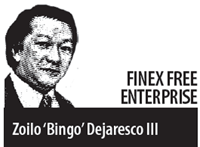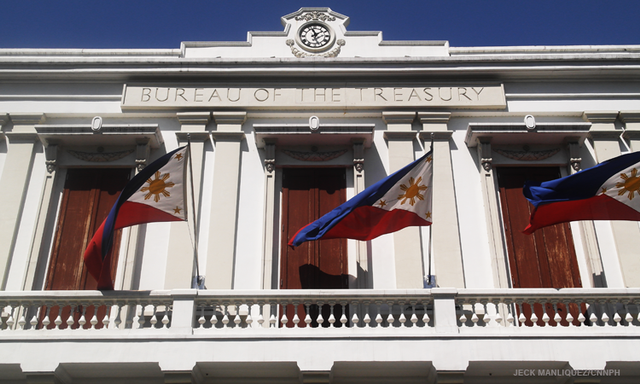
The Asean, with 600 million people and with the highest GDP growth rate, readily attracts many seller-nations and investors. And with the region even now integrating, with tariff barriers falling, would help ensure the Asean should primarily be for Asians first.
We copied that from you, Donald J. Trump.
There are those who maliciously wish the Asean fail for its own selfish reasons. For instance, some say unlike the European Union where member-nations are steeped in western liberal democracy and live by the thoughts of Martin Luther King, the Asean, on the other hand, is a rather strange animal.
Some nations in the region are Buddhists, others Muslims and Christians and what not. Many are democracies but some are militaristic and fascistic. We are diverse.
Culturally, the Asean peoples are ostensibly weak because they seek consensus and are not confrontational in resolving issues. That is why Asean leaders skirted the issue of China’s imperialism in the China Sea, Myanmar’s oppression of 600,000 Muslims in Rohingya, the military rule in Thailand and if one insists, the extrajudicial killings in the Philippines. Do you agree?
But let us count our real blessings.
One, from now on, 212,000 overseas Filipino workers in the Asean will have protection from harassment under the Asian Migrant Workers Protection Law. Two, Japan signed a subway project across Manila to be completed in 2027 as solution to the maddening traffic that costs P2 billion a day in productivity losses.
Three, China agreed to sign a Code of Conduct in the disputed China Sea that will govern any and all acts hereafter. It seems Beijing also assured nations of unhampered maritime navigation of the sea corridors for trade and commerce.
Four, Philippine banks are considered the most stable in the region due to the quality of its assets and thanks for the most part to a rather strict Bangko Sentral ng Pilipinas. Although the combined assets of the three largest banks equal only to the No. 1 bank in Singapore, still asset quality, not size, matters, according to BSP Governor Nestor A. Espenilla Jr.
But the biggest source of hope for Filipinos was the discussion on inclusive growth in the Asean. Not just of big corporations helping the small and medium industries but also the richer Asean nations pulling the weaker ones to prosperity.
Go Negosyo founder Joey Concepcion called it the three Ms needed for inclusive growth and development, and relates to mentorship, money and markets. The Asean Mentoring of Entrepreneurs Network was one of the best things that happened at the Asean Meetings.
Super-gurus in entrepreneurship in the Asean will teach 500 or so national mentors to understand the bigger Asean market. New hybrid cooperatives made up of workers will begin to own a significant number of shares in corporations, the theory being that the newfound prosperity of some is good for the prosperity of all.
On the money side, business leaders were one in saying we must not reward laziness through the P70 billion a year conditional cash-transfer program. Teach-them-to-fish-not-give-them-fish is the theme and where 20 percent of the CCT budget will be converted into livelihood opportunities.
Finally, large corporations were urged to accept small entrepreneurs as part of the supply chain or support their industries and be part of the wholesale supply system, and so on.
Fernando Zobel de Ayala, whose Ayala Corp. has penetrated even the overseas water supply market, believes we cannot always rely on a consumption-driven growth, otherwise, we will be stuck at the 6-percent output growth level.
He feels a 7-percent or 9-percent growth is what will lift many to middle income status as long as this growth was investment and not consumption led.
The call was for government and the private sector to join hands in the “Build, Build, Build” program to attract foreign investments and create jobs in the next four years. But we have to do something about the “ease of doing business” here where the country’s standing recently dropped several points down.
Due to the high cost of power, corruption and the general bureaucratic red tape, the Philippines has one of the lowest foreign direct investments in the Asean.
Consider Vietnam, a country torn as under by years of war but is now a more attractive investment haven than the Philippines. There is a place there called “Samsung City” filled with related factories and peopled by 40,000 Vietnamese workers. That’s how big Vietnam has become as a country of choice for investors.
Here in the Philippines town mayors ask the investor to line up his office first and negotiate so-called deals made in hell. And we have a Bureau of Customs that kills local industries by abetting the smuggling of goods. Stop wondering then why so many of our countrymen still languish in poverty, jobless and underpaid because of the lack of investments.
If the Philippines has to have a country comparative advantage in the Asean, the time to change is now. Doing that when the Asean would have been fully integrated in 2025—would be a too late.
****
Bingo Dejaresco, a former banker, is a financial consultant, media practitioner and book author. He is a life member and chairman of the Professional Development and Broadcast Media of Finex.
His views here, however, are personal and do not necessarily reflect those of Finex.
dejarescobingo@yahoo.com.
















